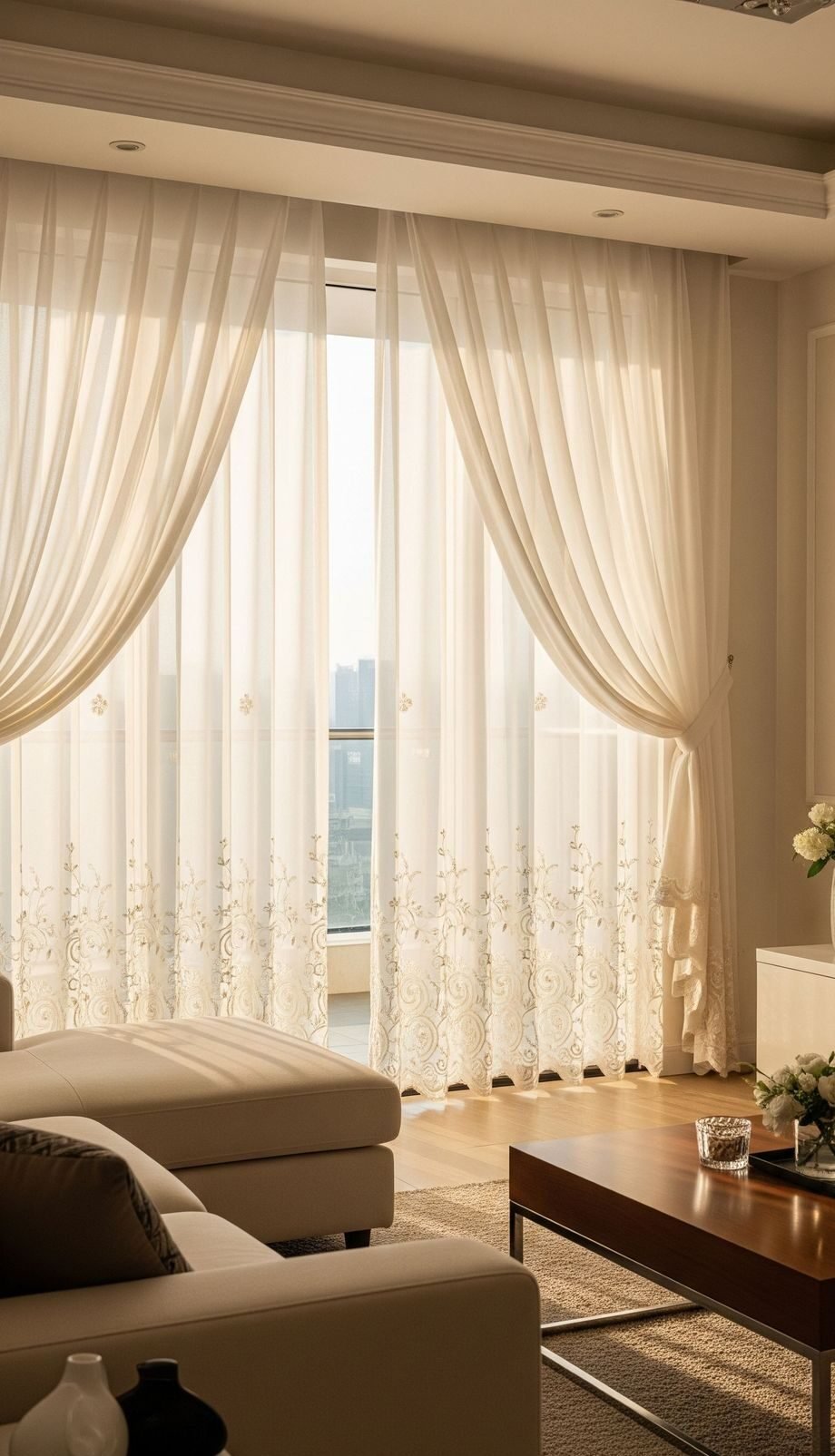How to Choose the Right Curtains for Every Room
Choosing the right curtains for your home can significantly impact the aesthetic appeal, functionality, and overall comfort of each room.
Curtains are not merely window coverings; they are essential design elements that can control light, provide privacy, insulate against temperature changes, and even reduce noise.
With a vast array of fabrics, styles, colors, patterns, and hardware options available, selecting the perfect curtains can seem daunting.
This comprehensive guide will walk you through the key considerations to help you make informed decisions for every room in your house.
Understanding the Basics of Curtains
Before diving into room-specific choices, it’s crucial to understand the fundamental aspects of curtains.
This includes the different types of curtains, heading styles, lining options, and the importance of accurate measurements.
Types of Curtains
- Panel Curtains: These are the most common type, consisting of individual fabric panels that hang from a rod via various heading styles. They are versatile and suitable for most rooms.
- Sheer Curtains: Made from lightweight, translucent fabrics, sheer curtains allow natural light to filter through while offering minimal privacy. They are often used in layers with heavier curtains for greater light control and privacy options.
- Blackout Curtains: Crafted from dense, opaque fabrics or with a blackout lining, these curtains completely block out sunlight. They are ideal for bedrooms, home theaters, or any room where darkness is desired.
- Thermal Curtains: Designed with insulating layers, thermal curtains help to regulate room temperature by preventing heat loss in winter and heat gain in summer. They can also offer some light-blocking and noise reduction benefits.
- Valances and Cornices: These are decorative window treatments that hang across the top of the window. Valances are soft, draped fabric, while cornices are rigid, often made of wood. They are primarily used for adding style and concealing curtain hardware.
Curtain Heading Styles
The heading style refers to how the top of the curtain is finished and how it attaches to the curtain rod. The choice of heading style affects the drape, folds, and overall look of the curtains.
- Rod Pocket: A simple and traditional style where a channel is sewn into the top of the curtain panel through which the rod is inserted. This creates soft, gathered folds.
- Grommet: Metal or plastic rings are inserted along the top edge of the curtain panel. The rings slide directly onto the rod, creating clean, uniform folds.
- Tab Top: Fabric loops or tabs are sewn along the top edge of the curtain panel and hung over the rod. This style creates a relaxed and casual look.
- Pinch Pleat: Fabric is folded and sewn at regular intervals along the top of the curtain panel to create tailored, structured pleats. This style requires the use of curtain hooks and rings.
- Pleated (Various Types): This category includes various pleat styles such as pencil pleat, goblet pleat, and box pleat, each offering a different level of formality and drape.
- Wave Fold: A modern style that uses a special track and heading tape to create consistent, soft waves in the fabric.
Curtain Linings
Adding a lining to your curtains can enhance their functionality and appearance.
- Unlined: Simple fabric panels without any additional backing. Suitable for decorative purposes or sheer fabrics where light filtering is desired.
- Standard Lining: A layer of fabric sewn to the back of the main curtain fabric. It provides a more finished look, improves drape, and offers some light filtering and insulation.
- Blackout Lining: A dense, opaque lining that blocks out virtually all light. Essential for bedrooms and media rooms.
- Thermal Lining: An insulated lining that helps to regulate room temperature and can also offer some light blocking and noise reduction.
- Interlining: A layer of thick, often flannel-like fabric placed between the face fabric and the lining. It adds body, fullness, and insulation, creating a more luxurious look and feel.
Measuring for Curtains
Accurate measurements are crucial for ensuring your curtains fit properly and hang well.
- Determine the desired length: Decide where you want the curtains to start and end. Common options include:
- Sill Length: Ending just below the windowsill. Suitable for kitchens, bathrooms, or areas where floor-length curtains might be impractical.
- Apron Length: Extending a few inches below the windowsill. A more traditional and versatile length.
- Floor Length: Hanging about half an inch above the floor. Creates a clean and elegant look.
- Puddled Length: Extending several inches onto the floor. Offers a more dramatic and luxurious feel but can be less practical in high-traffic areas.
- Measure the window width: Measure the width of the window frame. For proper fullness, the total width of your curtain panels should be 1.5 to 3 times the width of the window, depending on the fabric weight and desired fullness. Sheer fabrics typically require more fullness than heavier fabrics.
- Determine the rod placement: The curtain rod should extend several inches beyond each side of the window frame (typically 3-6 inches) to allow the curtains to be fully drawn back, maximizing light and the view. The height of the rod depends on the desired look and the heading style. Hanging the rod higher than the top of the window can make the window appear larger and the ceiling higher.
- Calculate the fabric length: For rod pocket or tab top curtains, add a few inches to your desired finished length for the heading. For grommet or pleated curtains, the measurement is usually taken from the top of the rod to the desired endpoint. Consult the manufacturer’s instructions for specific heading style requirements.
Choosing Curtains for Different Rooms
Now, let’s explore specific considerations for selecting curtains for various rooms in your home.
Living Room Curtains
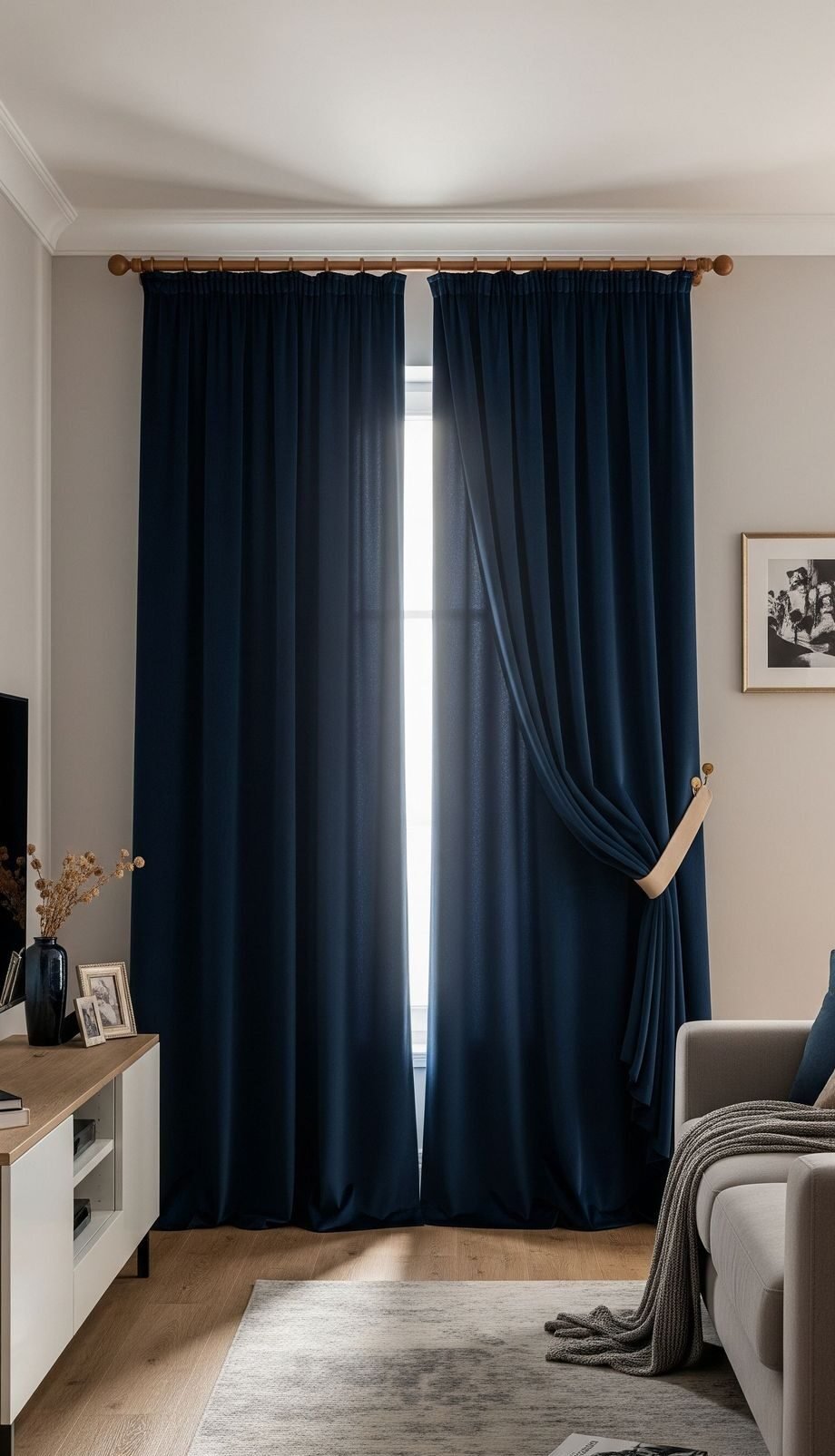
The living room is often a central gathering space, and the curtains should balance aesthetics, light control, and privacy.
- Functionality: Consider how the room is used. Do you need to block out harsh sunlight during certain times of the day? Do you require a high level of privacy?
- Light Control: Layering sheer or light-filtering curtains with heavier, lined panels offers maximum flexibility for controlling the amount of natural light. During the day, sheers can provide privacy while still allowing light in. Heavier panels can be closed for greater privacy or to block out light.
- Privacy: If your living room is on a ground floor or faces a busy street, consider fabrics with a tighter weave or add a privacy lining.
- Style and Aesthetics: The curtains should complement the overall décor of the living room. Consider the color scheme, furniture style, and existing patterns.
- Color: Choose colors that either blend with the walls for a cohesive look or provide a pop of contrast to add visual interest.
- Pattern: If you have solid-colored furniture, patterned curtains can add personality. Conversely, if your furniture is patterned, opt for solid or subtly textured curtains.
- Fabric: The fabric choice will influence the drape and formality of the curtains. Linen and cotton blends offer a natural and relaxed feel, while silk or velvet can add a touch of luxury.
- Length: Floor-length curtains are generally preferred in living rooms for a more polished and elegant appearance.
- Heading Style: Pinch pleat, goblet pleat, or wave fold headings can create a more formal and tailored look, while rod pocket or tab top headings offer a more casual feel.
Bedroom Curtains
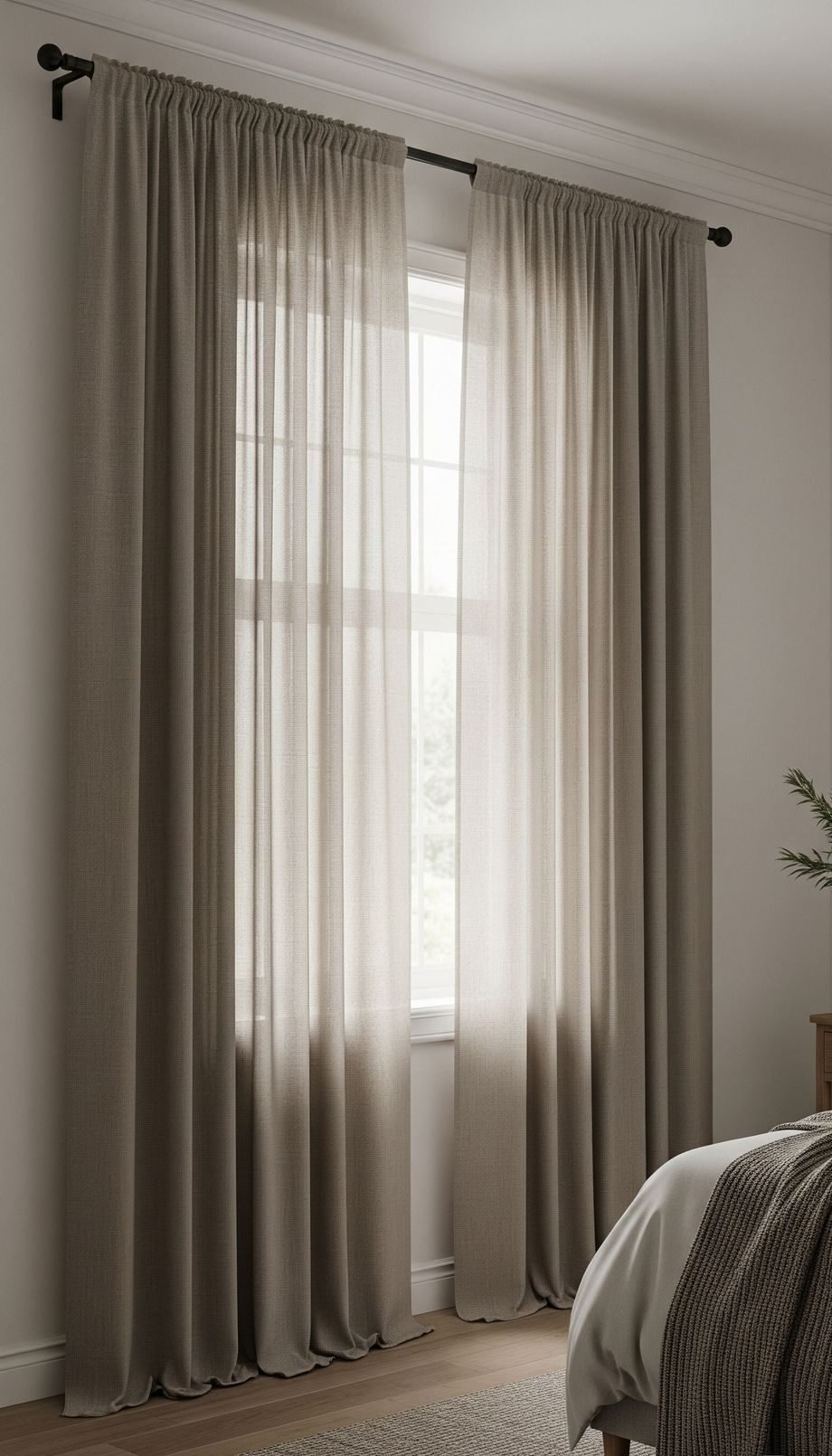
In the bedroom, the primary considerations for curtains are light control and privacy to ensure a comfortable and restful sleep environment.
- Light Blocking: Blackout curtains or curtains with blackout linings are highly recommended for bedrooms, especially for those sensitive to light or who work night shifts. They can effectively block out sunlight, streetlights, and other external light sources.
- Privacy: Bedrooms require maximum privacy. Opt for fabrics with a tight weave or add a privacy lining to ensure complete opacity when the curtains are closed.
- Thermal Insulation: Thermal curtains or curtains with thermal linings can help to keep the bedroom cool in the summer and warm in the winter, contributing to energy efficiency and comfort.
- Style and Aesthetics: While functionality is key, the curtains should also contribute to the overall ambiance of the bedroom.
- Color: Calming and soothing colors are often preferred in bedrooms. Consider muted tones, pastels, or deep, rich colors that promote relaxation.
- Fabric: Soft and luxurious fabrics like velvet, silk blends, or heavy cotton can enhance the feeling of comfort and coziness.
- Pattern: Subtle patterns or textures can add visual interest without being overwhelming.
- Length: Floor-length curtains are generally the best choice for bedrooms, creating a sense of elegance and maximizing light blocking.
- Heading Style: Pinch pleat or rod pocket headings are popular choices for bedrooms, offering a balance of style and functionality.
Kitchen Curtains
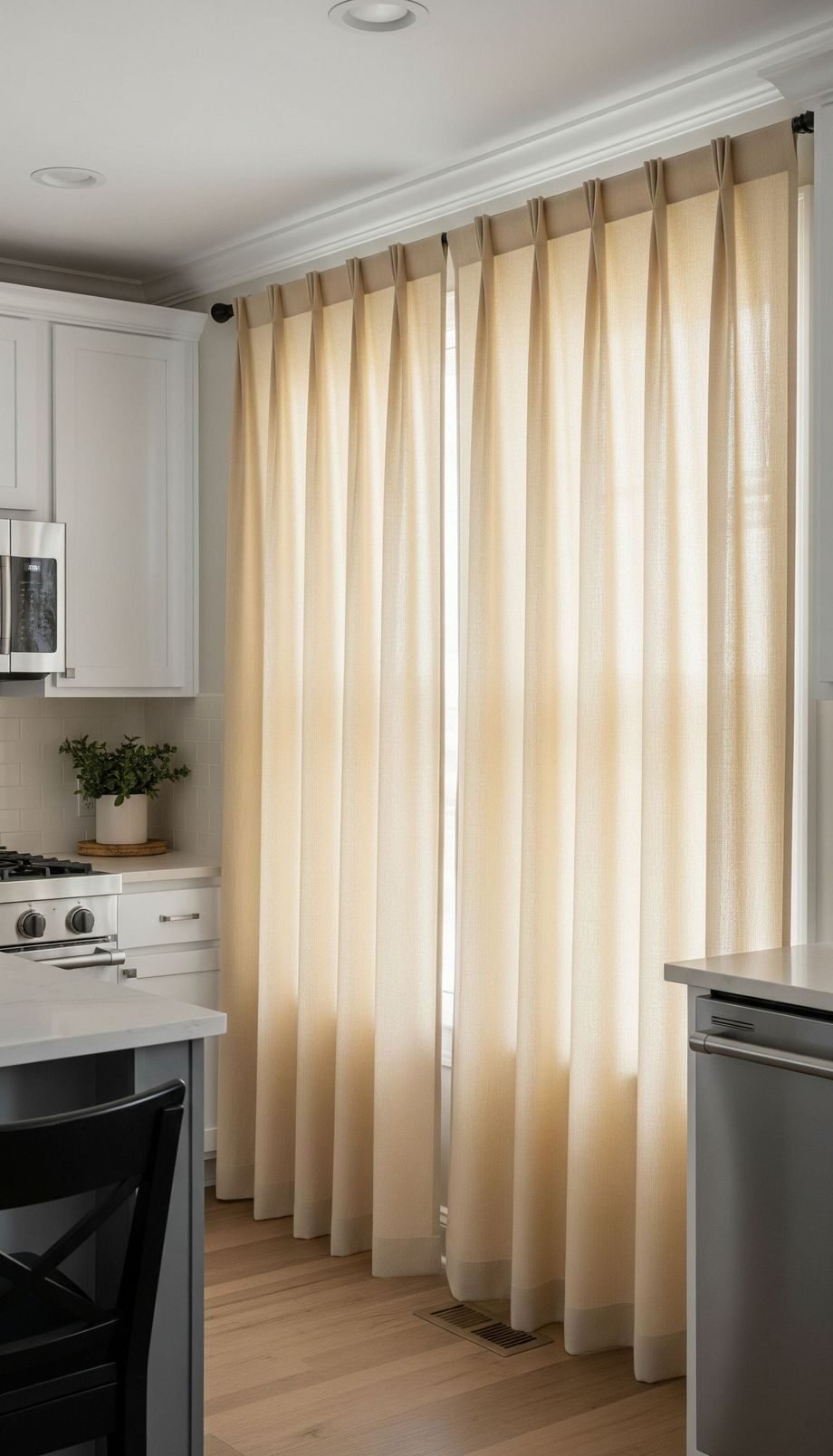
Kitchen curtains need to be practical, easy to clean, and able to withstand potential moisture and grease.
- Functionality: Kitchens often require good natural light. Curtains should allow light in while providing some privacy, especially if the kitchen faces a street or neighboring property.
- Light Control and Privacy: Consider using sheer or café curtains that cover only the lower portion of the window, allowing natural light in while providing privacy at eye level.
- Material: Opt for durable and easy-to-clean fabrics such as cotton blends, linen blends, or synthetic materials. Avoid delicate fabrics that are prone to staining or damage from moisture.
- Style and Aesthetics: Kitchen curtains can add a touch of personality to a functional space.
- Color and Pattern: Choose colors and patterns that complement your kitchen décor. Cheerful prints, stripes, or solid colors can brighten up the space.
- Length: Sill-length or café curtains are generally the most practical choices for kitchens, as they avoid contact with countertops or sinks.
- Heading Style: Rod pocket or tab top headings are common and easy to manage in a kitchen setting. Valances can also be used to add a decorative touch without obstructing light.
Bathroom Curtains
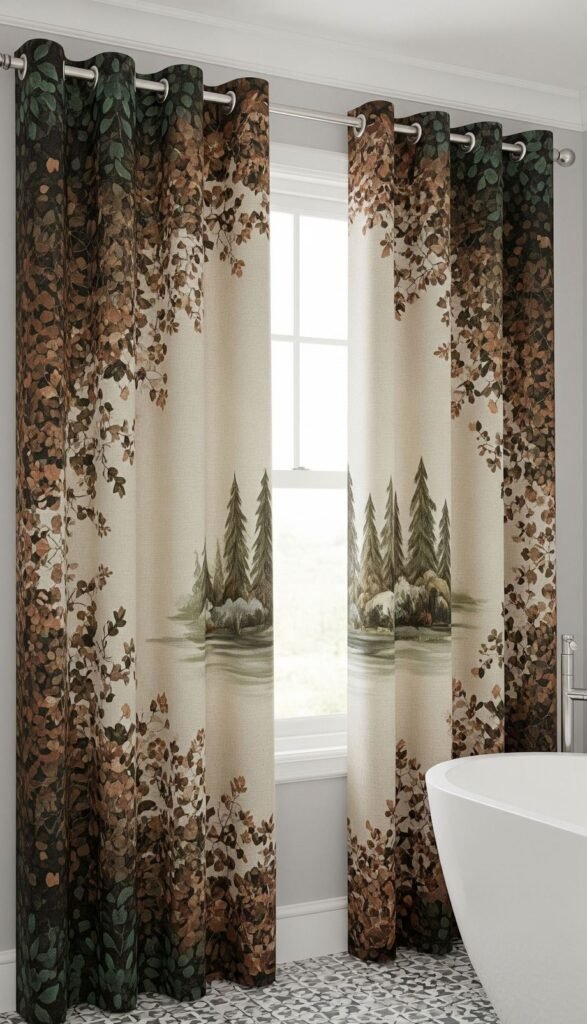
Bathroom curtains need to be moisture-resistant and provide adequate privacy.
- Functionality: Bathrooms require maximum privacy and the curtains should be able to withstand humidity and potential splashes.
- Material: Choose moisture-resistant fabrics such as polyester or vinyl. These materials are less likely to mildew or water damage.
- Privacy: Opt for tightly woven fabrics or add a privacy lining to ensure complete opacity.
- Light Control: Depending on the location and size of the bathroom window, you might want to allow some natural light in. Consider sheer or light-filtering options if privacy is not a major concern, or combine them with heavier panels for flexibility.
- Style and Aesthetics: Bathroom curtains can be a subtle but important design element.
- Color and Pattern: Choose colors and patterns that coordinate with your bathroom décor, such as towels, rugs, and shower curtains (if separate).
- Length: Sill-length or apron-length curtains are often preferred in bathrooms to avoid contact with the floor and moisture.
- Heading Style: Simple and easy-to-clean heading styles like rod pocket or grommet are practical choices.
Dining Room Curtains
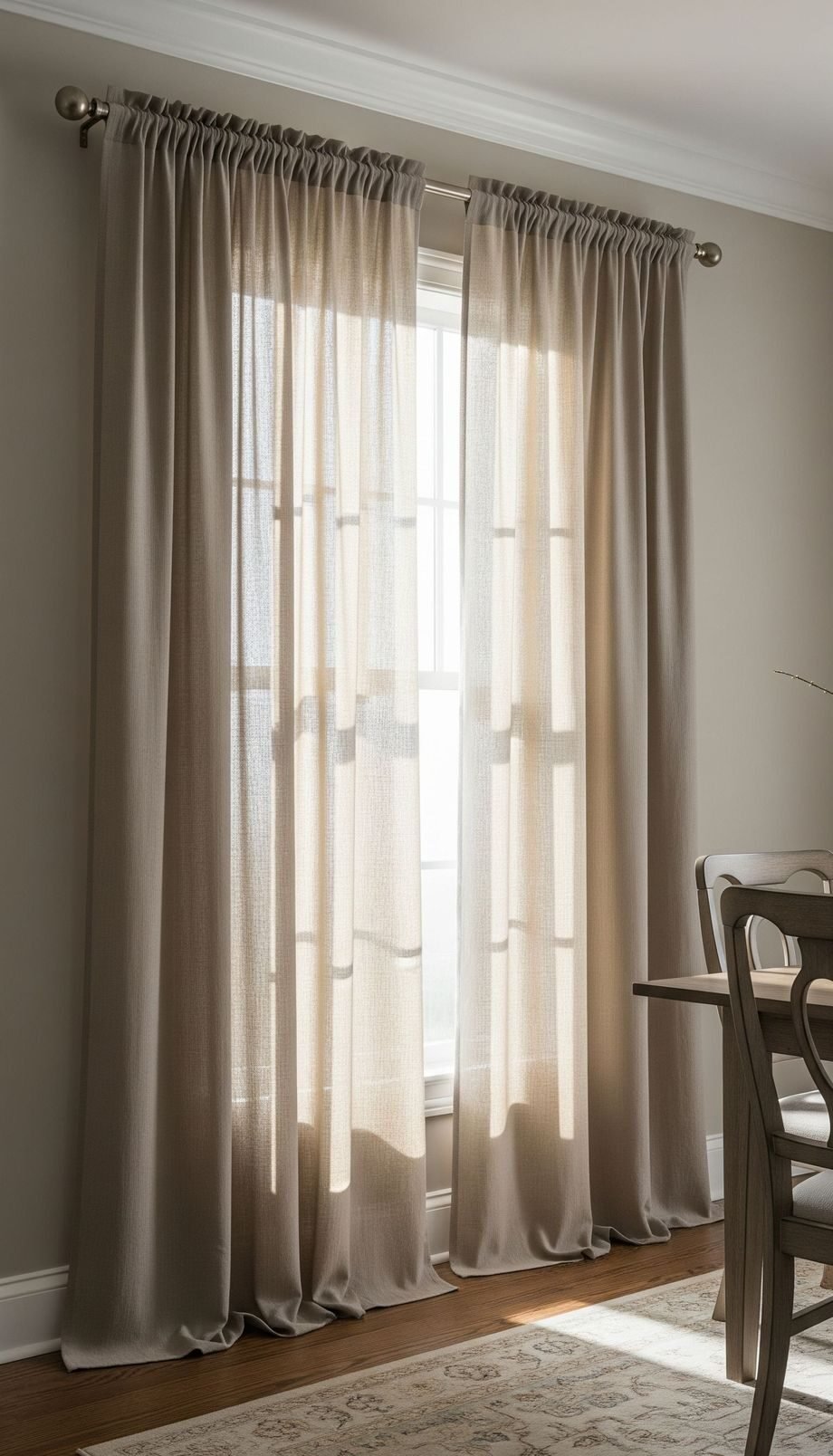
Dining room curtains can enhance the ambiance and formality of the space.
- Functionality: Dining rooms often benefit from natural light during the day and privacy in the evening.
- Light Control and Privacy: Layering sheer or light-filtering curtains with heavier panels provides flexibility for different times of day and occasions.
- Style and Aesthetics: Dining rooms can handle more formal and decorative curtain styles.
- Color and Pattern: Choose colors and patterns that complement your dining room furniture and décor. Elegant fabrics, rich colors, and subtle patterns can create a sophisticated atmosphere.
- Fabric: Fabrics like linen, silk blends, or damask can add a touch of luxury.
- Length: Floor-length curtains are generally preferred in dining rooms for a more formal and polished look.
- Heading Style: Pinch pleat, goblet pleat, or wave fold headings can enhance the formal feel.
Home Office Curtains
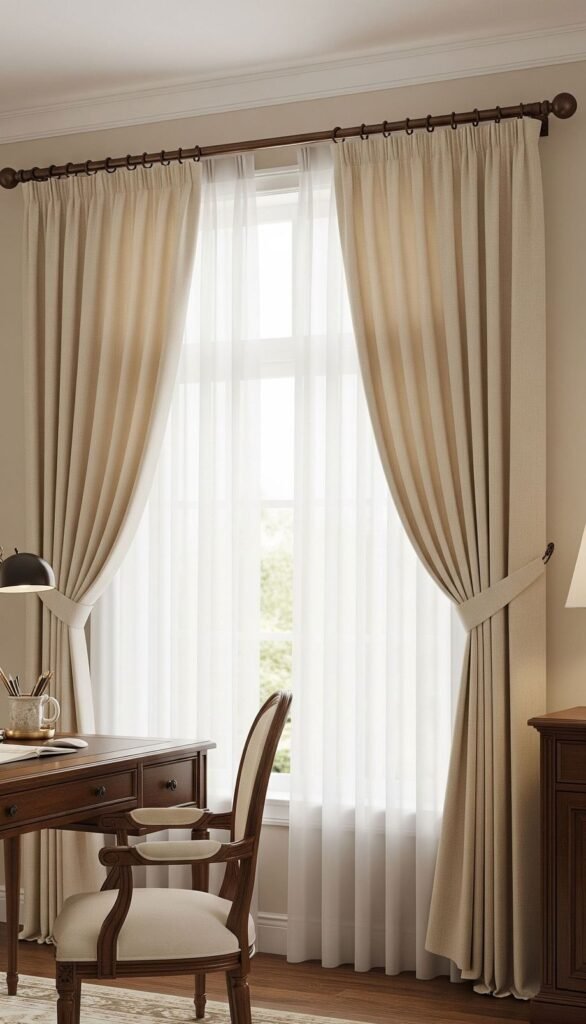
In a home office, curtains should help control glare on screens and provide a comfortable working environment.
- Functionality: The primary goal is to minimize glare and provide some privacy without completely blocking out natural light.
- Light Control: Light-filtering curtains or roller blinds are often good choices for home offices. They diffuse harsh sunlight and reduce glare while still allowing some natural light to enter the room.
- Privacy: Depending on the location of your home office, you might need some level of privacy.
- Style and Aesthetics: Choose curtains that create a calm and professional working environment.
- Color and Pattern: Neutral colors and subtle patterns are often preferred in home offices. Avoid overly distracting or bold designs.
- Fabric: Durable and easy-to-maintain fabrics are practical.
- Length: Sill-length or apron-length curtains can be suitable for home offices, especially if there is furniture placed under the window. Floor-length curtains can also work well.
- Heading Style: Simple and functional heading styles like rod pocket or grommet are often chosen for home offices.
Additional Tips for Choosing Curtains
- Consider the scale of the room and windows: Larger rooms and windows can handle bolder patterns and heavier fabrics, while smaller spaces might benefit from lighter fabrics and simpler styles.
- Think about the maintenance: Some fabrics require more care than others. Consider your lifestyle and how much time you are willing to spend on cleaning and maintaining your curtains.
- Don’t forget the hardware: The curtain rod, rings, and finials should complement the style of your curtains and the overall décor of the room. Ensure the rod is sturdy enough to support the weight of the curtains.
- View samples in your home: Before making a final decision, obtain fabric samples and view them in the specific room under different lighting conditions to ensure the color and texture work well in the space.
- Consider layering: Combining different types of window treatments, such as blinds or shades with curtains, can offer maximum light control, privacy, and insulation, as well as added style.
Conclusion
Choosing the right curtains for each room in your home is a multifaceted process that involves considering functionality, aesthetics, and practical considerations.
By understanding the basics of curtains, assessing the specific needs of each room, and following these guidelines, you can select window treatments that enhance the beauty and comfort of your living spaces.
